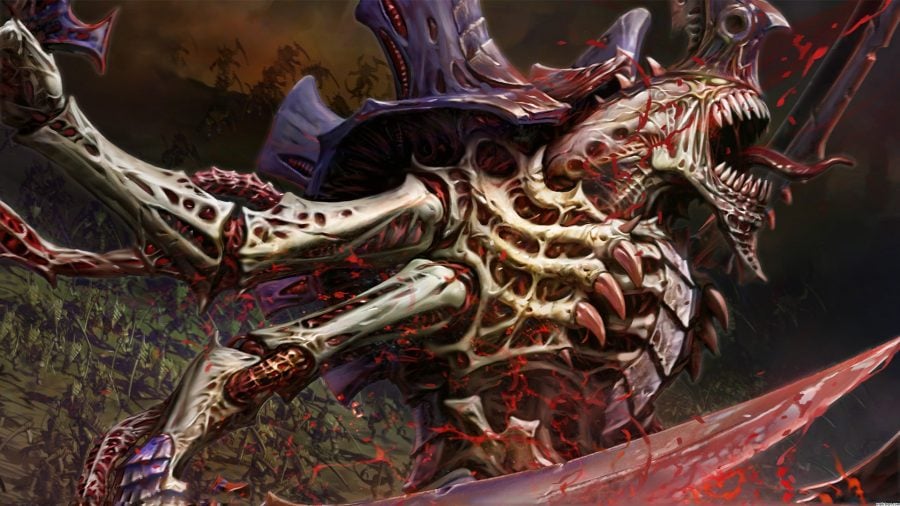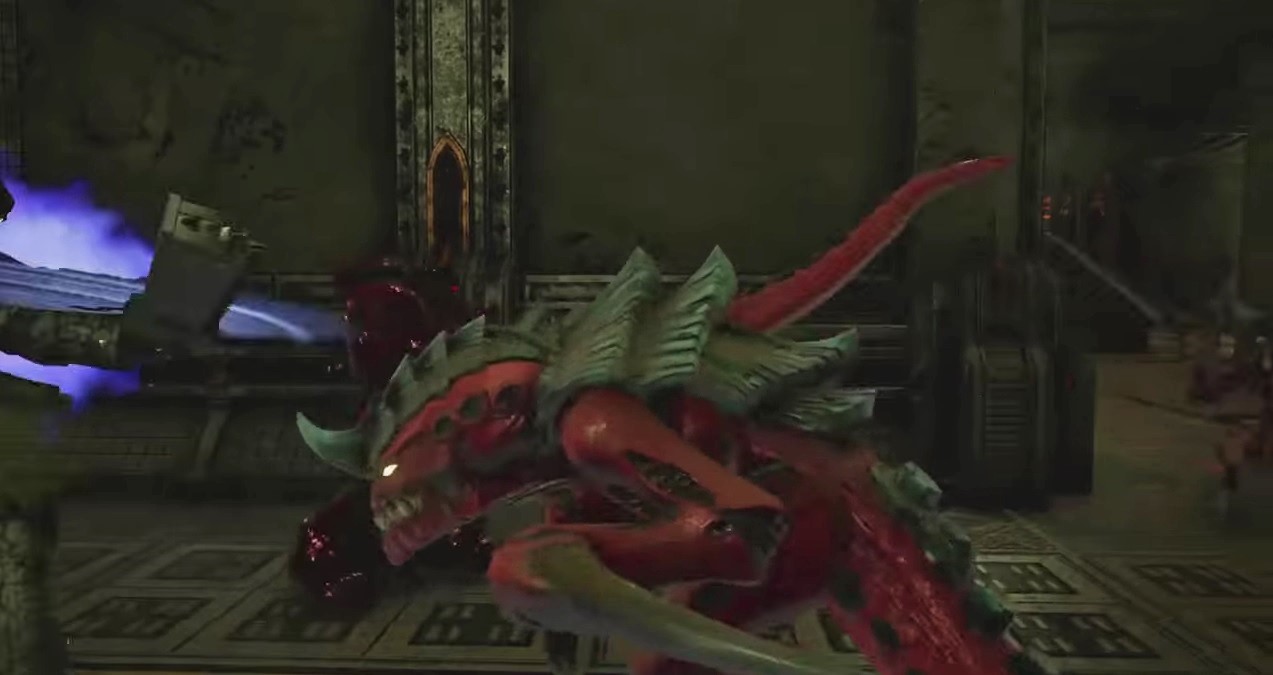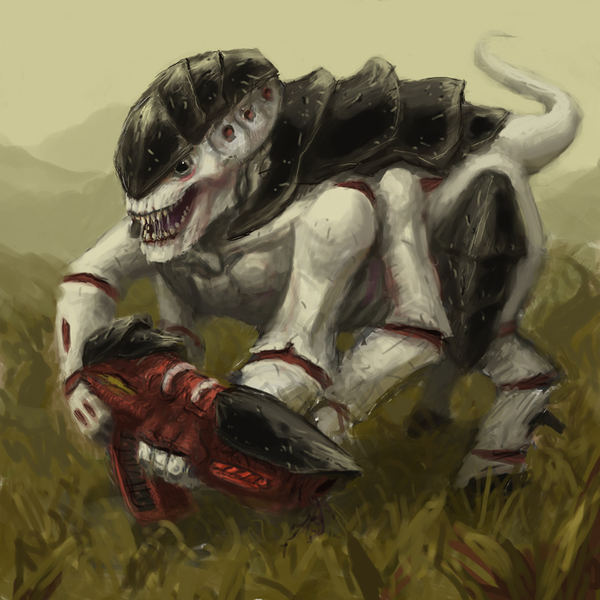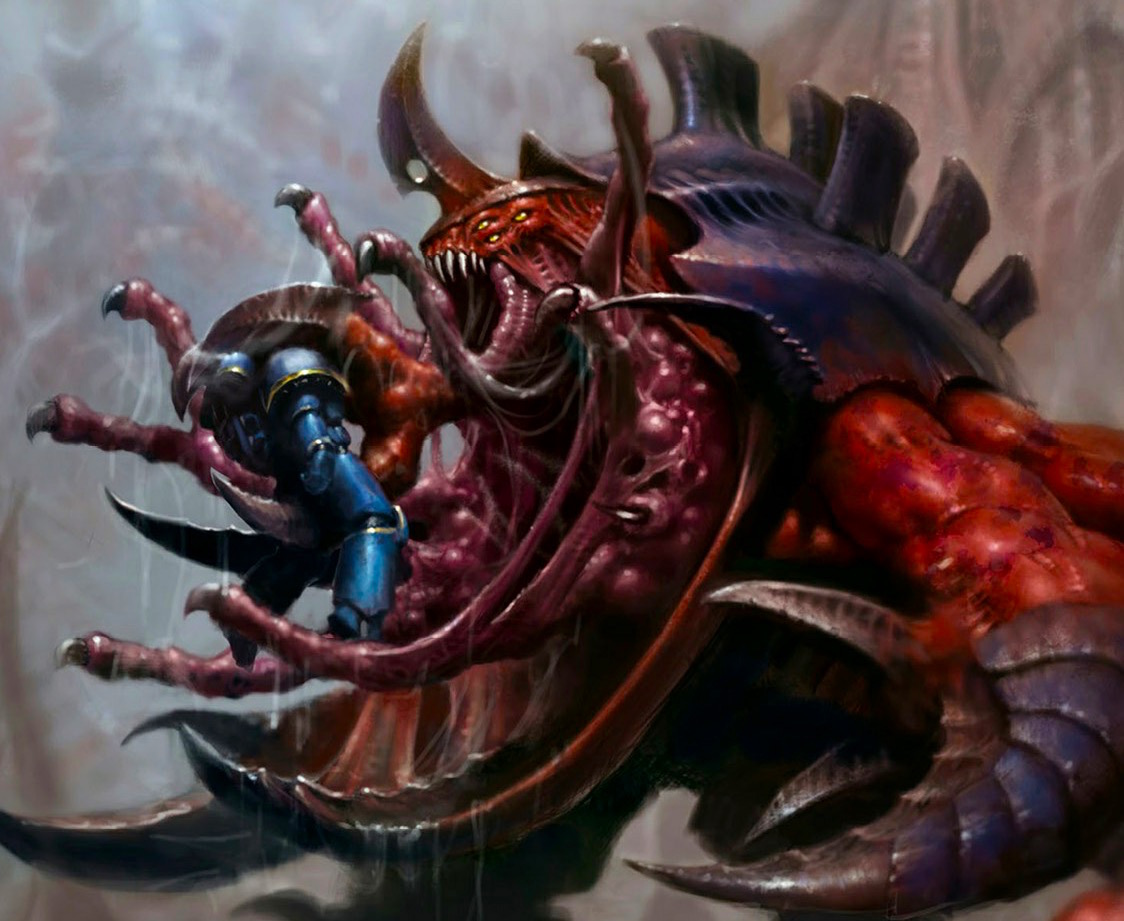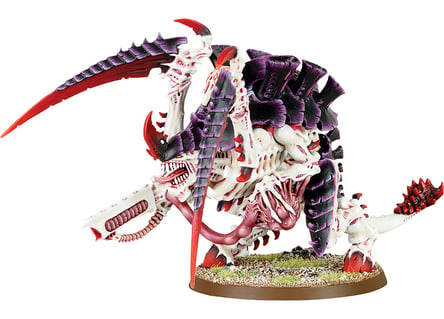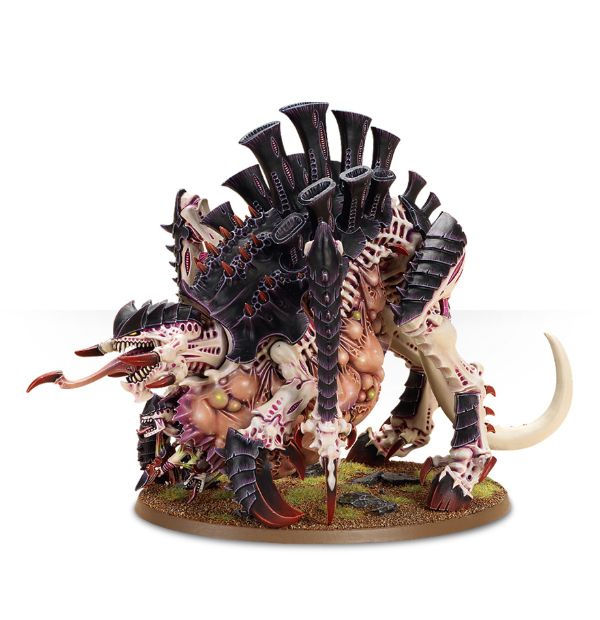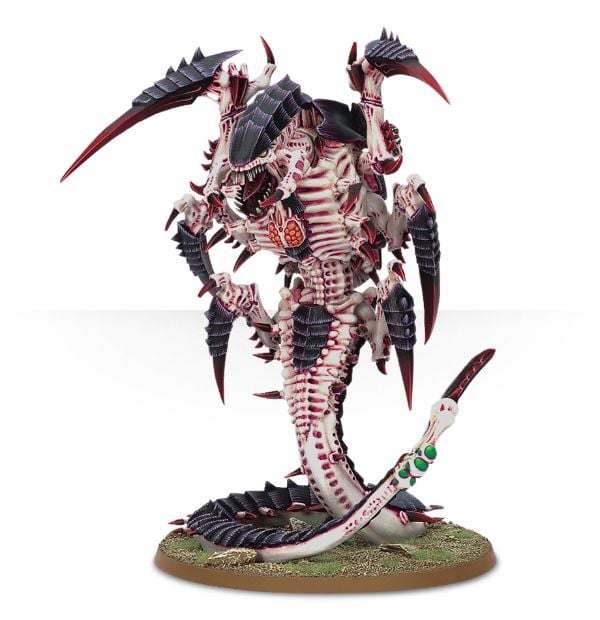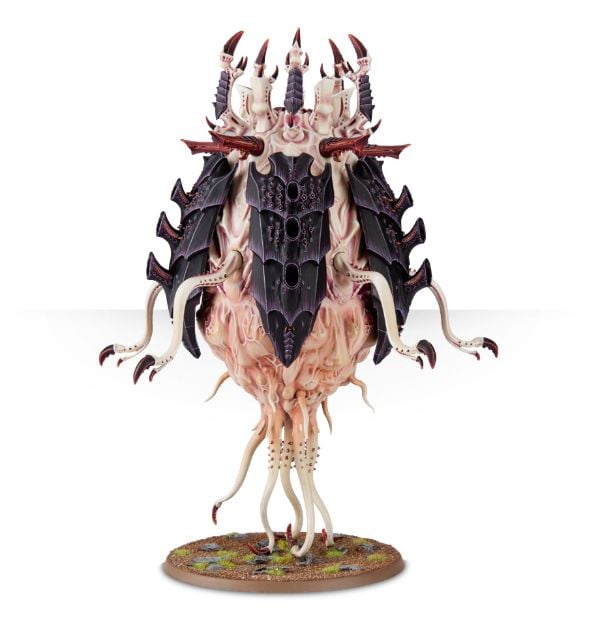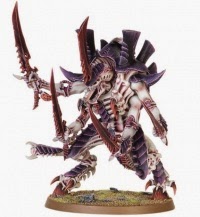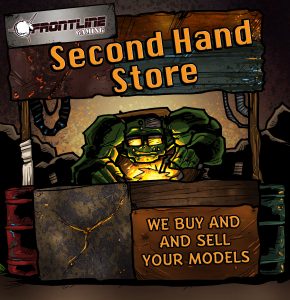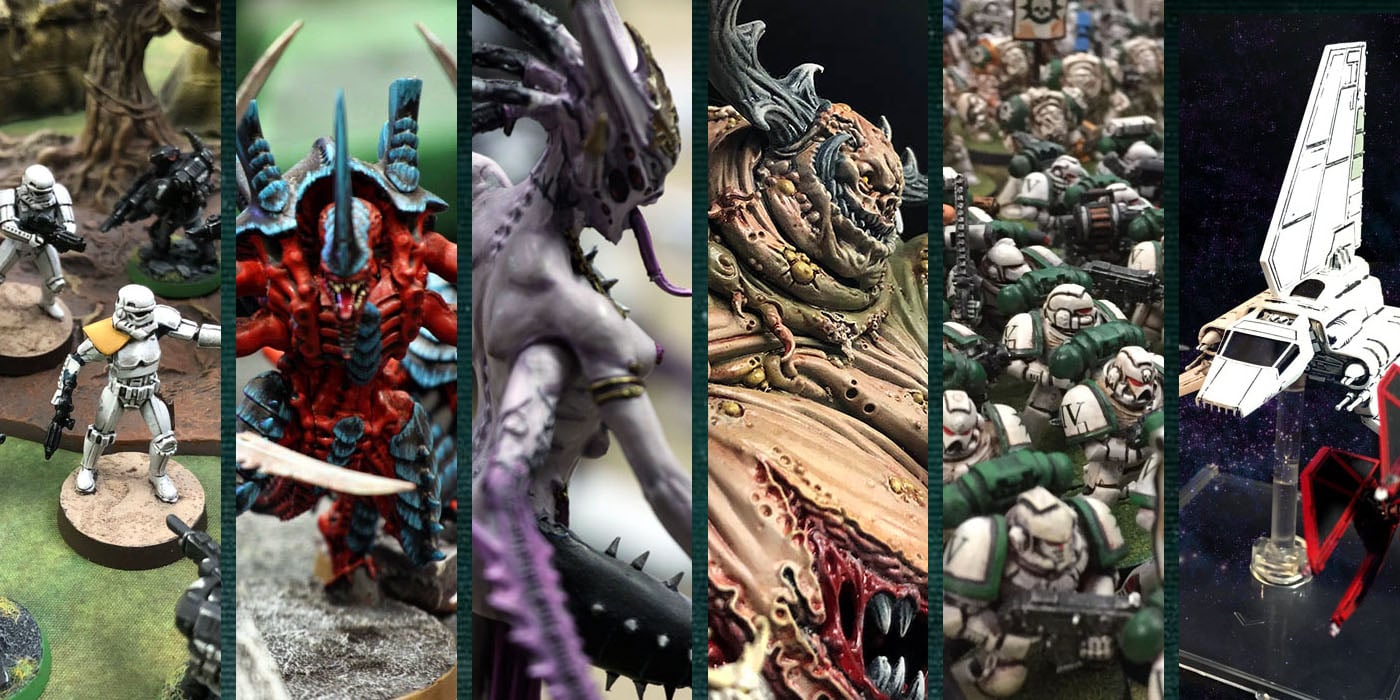8th Edition: Tyranid Lists and Genre


Let’s talk about Tyranid list building in 8th.
Hello everyone, Danny from TFG Radio here, and now that 8th is starting to really stretch its legs, I want to talk about how I’ve been building lists. As always, check out the can’t-stop, won’t stop of 40k tactica, Frontline’s Tactics Corner!
Let’s look at the different types of lists that Tyranids can run with success. I like to use the word genre for this, but archetype or build are also valid ways of explaining the concept. The general idea is that lists can fall into certain expectations and pursue certain paths to victory, and so they follow a pattern in their construction. Of course, each genre of list has numerous sub-genres, and you can blend to your heart’s desire, but then you have to be careful to not scatter yourself and spread your resources too thin.
The Swarm:
Tyranids excel at bringing a horde of bodies to the table thanks to our cheap and useful troop choices. All four are excellent and bring something unique to the table, and this also helps us fill out Battalions quite easily for some sweet, sweet CP.
Strengths:
- Great at attrition
- Great at board control
- Great on scenario
To borrow from Mixed Martial Arts, Swarm armies tend to be the wrestlers and ju-jitsu fighters in the ring. They want to maximize their staying power and their ability to control the tempo of the game. In terms of 40K, this means to control how your opponent moves, where they can move, and ultimately, denying them the ability to reach mid-table objectives.
Because swarms bring 100+ bodies, big weapons like Lascannons are wasted, making them highly points inefficient, and since you often have several waves of units, you can lose a unit or two and still have plenty of push, and while you may not be killing dozens of your opponent’s models in a turn, you are banking on the fact that they can’t suffer the same level of casualties.
You want to push forward as fast as possible, and by spreading out, you limit any space for your opponent to land any reserve units, keeping your own backfield safe. You are likely going to win the mission, not table your opponent, and you need to think this way.
Weaknesses:
- Can lack knockout power
- Time-intensive
- Physically demanding in major events
The problem that a Swarm army can face is that it often lacks the ability to point and click, meaning you do not get to choose to just evaporate a unit. You are a grinding fighter, but that means if something absolutely has to die, you’ll likely struggle to make this happen. Termagants and Hormagaunts are great, but they are not going to kill Knights or heavy armor, and if you absolutely need one of those to die, you might not get it to happen. If your opponent starts killing five or six models for each one of theirs, you might find yourself out of bodies.
Logistically, Swarms are also difficult to play in a timed setting. Moving 100+ models around the table is not easy unless you really practice it, and since model positioning is a huge part of the game, it is easy to get sloppy and make poor placement errors. Swarms want to keep things tied up, but if you don’t place your Hormagaunts well and swing in to lock a unit down, your opponent can fall back and get to blasting.
Also, “Ork Back” is real, and being hunched over a table for a game isn’t too bad, but 3 games? That can get painful. For longer events with 5+ games, it can actually be a physical challenge to keep your body postured over the table to move models, and I begrudge no one who brings a back brace. While this doesn’t apply to everyone, for someone with a back injury (like me), it is something to consider.
Here’s a good example of a Swarm List, very much designed to strangle the board and lock enemies in place. Notice I have no Monsters except for a Tyrannocyte for a pin-point Genestealer strike and a Trygon for a Devil-Gant bomb. All these lists are 2000 points, FYI.
Battalion Detachment:
HQ: 1x Malanthrope
HQ: Broodlord
TR: 30x Termagants w/ 30x Devourers
TR: 30x Termagants
TR: 30x Hormagaunts
Battalion Detachment:
HQ: 1x Malathrope
HQ: Broodlord
TR: 30x Hormagaunts
TR: 20x Genestealers
TR: 20x Genestealers
HS: Trygon
DT: Tyrannocyte with 5x Barbed Stranglers
9 CPs. Two psykers (for Catalyst and Onslaught). 160 infantry (excluding characters). 10 drops.
Nidzilla (Monster Mash)
So this genre is all about bringing the big bad bugs, and well, Tyranids have a great selection of beautiful models. You can of course run this either as a melee oriented death machine or a ranged army as our big bugs can do both quite well. Our best single model melee fighters are Monsters as are our best high value shooting units, so you can mix or just dedicate to one or the other.
Strengths:
- Big hitting power
- Very resilient to high volume, low quality shooting
- Low model count
- Beautiful on the table
So Nidzilla is a list that can punch and/or shoot as hard as our Index allows, and if you want to be able to point at a unit or model and destroy it, this is the way to go. A Haruspex can do serious damage to just about any hard target, and Exocrines can lay down some serious hurt at range. To go on the with the MMA analogy, Nidzilla is the big, heavyweight striker that relies on hard hits to end the fight and the ability to tank a lot of chip shots.
Because T6 is the lowest toughness amongst our Monsters, a lot of high volume shooting is nowhere near as effective. Needing 5s to wound is not too great, and of course, most of our Monsters have a 3+ armor save. This can make each model annoying to deal with as with a string of lucky saves or bad dice on your opponent’s part, each Monster can absorb staggering firepower.
This is a low model count and often low drop army, so you have plenty of time to carefully consider your movement, target priority, and general turn by turn tactics. You may even be able to get lunch early, one way or the other. This can be a real boon in longer events where player fatigue is real, and by focusing yourself on just a few models, you really can be critical of what you are doing with them each phase of the game.
While I think a beautifully painted Swarm looks amazing on a table, it can lack the “Oh my god, what is that big beautiful bastard?” cries of seeing a dazzling centerpiece model, or several, on the table. Since you are only bringing a small number of models, you can really hobby your heart out and make each one a stunning work.
Weaknesses:
- Hard to win most missions
- Little board control
- Highly vulnerable to high-powered weaponry
- Easy to be tarpitted
It is not all rainbows and biomass for Nidzilla as there are some holes in its game. Due to the low model count, if there are 4+ objectives on the table, a Monster list can struggle to compete. By turn 5, you may just not have enough models on the table to really be able to win the mission, and with progressive missions, you have to think long and hard about allocating a precious resource away from the main fight to score an objective.
You will get enemies in your backfield as you lack the models to cut off large swathes of the board. Enemy reserves will be able to land with far more impunity, so against an army that really relies on this, you are vulnerable. As part of this, you will often find yourself struggling to stop your opponent’s movement, and you are not great at tying things up. You will kill plenty of things, but you won’t necessarily be able to stop the forward push to the center of the table. You are more likely to get bogged down in a long fight and frozen in place. It is also important to note that your army cannot maximize use of terrain either, so a unit of Devastators at the top of a ruin may prove problematic for you since only our Flying bugs can get there.
Of course, Lascannons are real good at killing big targets dead, and since you have almost all big targets, those Lascannons get to put in work. Most armies don’t pay for the weaponry (or pay very little) that you can safely ignore, so you aren’t really making your opponent lose value. Against say a Bobby G gunline or an Artillery gunline, you may find yourself with a lot of dead big bugs before you can do your damage.
Here is a sample list of a shooty Nidzilla list that I’ve been kicking around. It is almost all Monsters except for the two Ripper units in reserve to grab/contest objectives turn 3, and it uses a single Tyrannocyte to either drop solo on an objective or even an Exocrine to stake out some far flung objective, as well as lower the number of drops. The carnifexes’ scything tail is huge as it gives each one 4-12 attacks per round at S4 AP -1, which is great for fighting their way out of most tarpit units, especially if you put several into a single unit.
Spearhead:
HQ: 3x Malathropes
TR: 3x Ripper Swarms
TR: 3x Ripper Swarms
HS: Exocrine
HS: Exocrine
HS: 3x Carnifexes with Bio-Plasma, thresher scythes, and 2x Double Deathspitters with Worms
HS: 3x Carnifexes with Bio-Plasma, thresher scythes, and 2x Double Deathspitters with Worms
DT: Tyrannocyte
Super-Heavy Auxiliary:
LoW: Barbed Hierodule
4 CPs. Up to 104 S7 shots per turn. 8-9 drops.
Alpha-Strike/Reserve
Tyranids have a lot of units and ability to pop out of nowhere, and this allows us to build some really nasty Alpha-strike lists that can cripple an opponent before they have the chance to swing. Between a mix of melee and shooting, we are able to keep a lot of our big punches safe and ready until the opportune moment, and this style of list really relies on being able to apply pressure exactly where it needs to.
Strengths:
- Surprise power
- Dictate Engagement
- Likely to go first
An Alpha-strike list in the Tyranid way is all about doing high damage right where you need it. You are likely not going to erase a whole army in the first turn, but you can cripple an army, so the rest of the game is clean up. You are really aiming for being able to just destroy your opponent’s game plan by either killing their big hitters or getting into melee immediately.
Since your best units that will dictate the outcome of the game are in reserve for the most part, you get to dictate how and when the real fighting begins. This lets you plan out how you want the first three turns to go, and you can go for an immediate turn 1 scrum or slow the tempo down until turn 3 to try and bait your opponent to spread out and leave you more gaps to land. Especially on a mission with multiple objectives outside of the deployment zones, you can wait and make your opponent have to move out to try and not lose on the mission.
Reserve armies can have a lot of low drops thanks to Trygons and Tyrannocytes, so in ITC, it is easier to get that sweet +1 to go first, which definitely means you will go first most games. While this can be a detriment on the mission, this army genre isn’t too keen on the mission anyway, so that is not necessarily a bad thing. The issue I often run into is having enough units on the board to balance out the ones in reserve while still keeping a low number of drops.
Weaknesses:
- Vulnerable to other reserve armies or not going first
- Can be countered easily
- Runs out of gas quickly
To keep consistent and to not mix metaphors, this list is the flurry fighter. It is primarily a striker, and it comes out swinging hard, but it can run out of energy quite quick, and any opponent that weathers the storm is going to find an entirely different fighter after the clouds have passed.
First, this army can easily lose to another reserve army, and then it becomes a battle of who drops first and who drops what. If you wait too long, especially if you went first, your opponent can drop in and pick up your backfield units, and boom, the game is over since everything is still in reserves and you lose by tabling. If you are playing a bit of a mirror match, you need to go second.
A smarter player can also mitigate a lot of damage here. By good model placement and movement, your best landing sites can be denied, and suddenly you cannot put pressure where you need to be pressure, and then the list starts to collapse a bit. It really relies on being able to put hurt down on command, and when it can’t, it starts to get picked apart.
This is a list that I’ve been having some decent success with, even against armies like Bobby G and his Deva-Boys. It banks on going first against most armies, and with 4 Tyrant Guard and good placement, Swarmy is hard to kill at range. This army has several first turn charges, but it can also delay a bit as needed. The genestealers are usually last drop as they are the knockout punch more times than not. I often drop the Hormagants first in front of their lines in range of Swarmy to get a big charge, and if need be, the Termagants with the Prime to whittle away any chaff units to allow the Hormies a chance to get into the meat of the army.
Battalion:
HQ: Swarmlord
HQ: Malanthrope
TR: 29x Hormagants
TR: 30x Termagants with 20 devourers
TR: 20x Genestealers
TR: 3x Rippers
FA: Hive Crone
FA: Hive Crone
EL: 4x Tyrant Guard
HS: Trygon with Adrenal Glands
HS: Trygon Prime
DT: Tyrannocyte
6 CPs. 9 Drops. 1 Psyker.
Well, I hope these lists get your noodle cooking, and these are not necessarily GT winning lists, but they are some examples of the different genres that Tyranids can pull off well. I’ve had success with each of these lists, and well, share yours. Thanks as always for reading, and make sure to check out TFG Radio as we wade through 8th edition and gear up for our own local GT, Hammer of Wrath. Of course, be sure to get your tickets for LVO where we will be judging yet again.
~How are you liking Nids in 8th so far?
And remember, Frontline Gaming sells gaming products at a discount, every day in their webcart!

